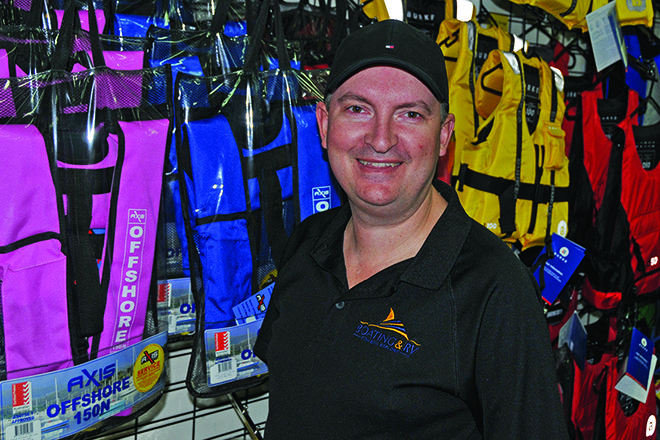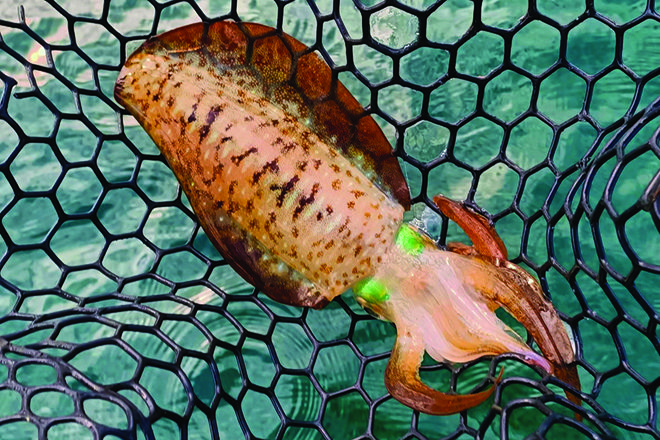LEADING marine products retailer Boating & RV, which has stores at Capalaba, Slacks Creek, Tingalpa and Townsville, has joined with Bush ‘n Beach to bring you a regular column with some serious information and news about general boating products.
Here, director Aaron Hunt looks at life jackets and clears up a few myths including some about ‘self-servicing’ the inflatable types.
There are plenty of myths and misinformation about life jackets – and unfortunately, they can even come from police and retailers, as well as the more common so-called expert up the road.
And many of the life jackets advertised on eBay don’t comply with Australian standards.
Back to the ‘experts’: We once had a law officer in the shop extolling his knowledge about inflatable life jackets to a customer.
He was wrong on so many fronts that he eventually was asked respectfully to leave the shop.
One of his claims to a customer was you could not service your own inflatable life jacket.
Well in some circumstances, you can:
Maritime Safety Queensland states: Inflatable life jackets used on a recreational boat must show an expiry date and be serviced by the manufacturer or authorised service centre annually (the only exception is if the manufacturer has established a documented servicing program, the owner or master can service the life jacket themselves, but must produce documentary evidence showing they followed the servicing program).
The key here is that self-servicing of a life jacket is only valid if the manufacturer allows it and if you keep all servicing receipts and certificates as evidence.
Boating & RV stocks the Axis range of life jackets and personal flotation devices – it is one of the brands that does allow self-servicing of life jackets for recreational use, but not for commercial purposes.
Axis life jackets for commercial use must be serviced by one of their agents, which are located in Brisbane, Gold Coast, Sunshine Coast and on the central Queensland coast at Gladstone, as well as interstate.
So, your first step is to ask your life jacket retailer for evidence that self-servicing is allowed on a particular life jacket, as well as documentation for the procedure.
Alternatively, check with the manufacturer of your life jacket or its importer and distributor.
Be aware that some manufacturers require you to have your life jacket serviced by them or an authorised agent.
This will ensure it continues to function as it should.
To give you a general idea of the types of requirements demanded under such a self-servicing program, they typically might include:
Checking for visible signs of deterioration and the condition of straps, strap keepers, buckles and so on.
Checking the inflation system and the tube you can use to inflate it by mouth. Some will suggest inflating it and leaving it overnight before checking in the morning so see if the inflation bladder has lost any air. The room would need to be a constant temperature.
Unscrewing and inspecting the CO2 cylinder with particular attention for any signs of corrosion or damage. The manufacturer might also suggest weighing the cylinder on an accurate set of fine scales. The manufacturer should stamp the weight tolerance on the cylinder (normally within a gram or two). Anything outside this indicates a problem.
Repacking the jacket in accord with its design and making sure the inflation toggle doesn’t get caught up.
Documenting all servicing work undertaken.
Again, the above is just a general indication of what might be involved.
Any servicing must be undertaken in exact accord with the manufacturer’s instructions for a particular jacket.
You should never attempt to repair a damaged jacket or one which you suspect has faults.
Return it to the manufacturer’s agent for verification of its status, or replace it.
Another example of life jacket misinformation – A boat accessories supplier continues to state on its website: Life jacket requirements: One life jacket or PFD for all passengers and crew of any age that must be worn on any open boat less than 4.8m in length.
Not true.
While it certainly is a smart and safe idea to do so, that claim is not universal in Queensland.
Yes, a life jacket must be worn by a person aged from 12 months to 12 years in a boat less than 4.8m long while it is under way.
A life jacket also must be worn by everyone crossing a designated coastal bar in an open boat less than 4.8m in length – but that’s it.
Not all the people, all the time in all the boats.
But again, wearing life jackets makes sense.
Next time you motor over to Tangalooma, get a friend who you know can and is prepared to rescue you.
Then jump in the water next to your boat, in a depth just over your head and try to put a life jacket on while in the water.
Time yourself.
Then imagine trying to do that in rough water.
As an overview, life jackets show which Australian Standard they comply with.
The current standard is AS 4758, which has replaced AS 1512-1996, AS 1499-1996 and AS 2260-1996.
Life jackets that meet the previous standards are still legal provided they are in good condition.
The new ratings system:
Coastal and SOLAS (Safety of Life at Sea).
These offshore life jackets can be used in all waters and are designed to keep you afloat for a long time at sea.
They have more flotation than a level 100 and have reflective tape and a whistle.
Level 100, 150 and 275 are different versions of life jackets for open waters – think in terms of fishing offshore.
Accordingly, they can be used everywhere.
Level 50 partially smooth waters – the areas are defined on charts but think in terms of them being very close to shore.
They also can be worn on a personal watercraft.
Level 50S – the S defines them as being for special purposes such as skiing and tubing, or buoyancy control for diving.
Designed for help you keep afloat for a short time.

Boating & RV director Aaron Hunt with compliant life jackets
 Bush 'n Beach Fishing Magazine Location reports & tips for fishing, boating, camping, kayaking, 4WDing in Queensland and Northern NSW
Bush 'n Beach Fishing Magazine Location reports & tips for fishing, boating, camping, kayaking, 4WDing in Queensland and Northern NSW







